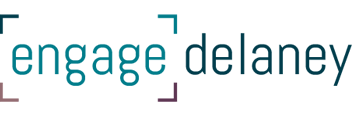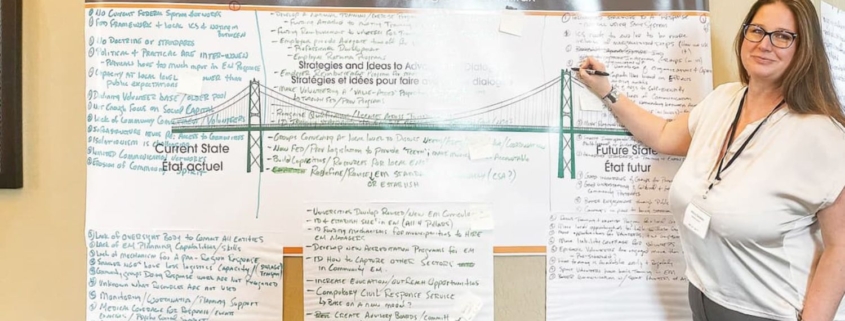The Bridge: Classic But Still So Good
Recently, we used the bridge technique in a series of national roundtables. This technique uses a visual template that is placed on the wall. We ask people to start at one end of the bridge that articulates the ideal future state. At the other end of the bridge is the current state, and the bridge span is the space where new ideas, actions, and strategies can be identified.
Here’s a run-down of how to use the bridge:
- Start with the future state. We start here so that we are not constrained in thinking about the future state by overly focusing on the current state. I like to spend between 30 and 45 minutes in the future state. The kind of questions you might ask here include:
- In five years, what would success look like?
- If we were ultimately successful with X, what would it look like? How would we know?
- How are we in relationships that matter when they are highest functioning?
- What does the best-case scenario look like? Feel like?
- Then, move to the current state. Here, you are looking to understand what things are like today. There may be a negativity bias, so it’s important to probe for what’s working well just as much as what could be improved. I tend to spend slightly less time here, ideally 20-30 minutes. Questions I might ask here include:
- What’s it like today?
- What’s working well?
- What could be improved?
- What’s the state of our relationships?
- What do the people we serve think about us?
Participants might be tempted to recite stats and facts, but really, that’s not the point. We want to learn what we can only learn from them. If people start going down a data hole, note the references, but then ask: What can we only learn from this group today about what it’s like at X (organization or for Y project)?
- Finally, move to the bridge span. This is where you ask participants to step back, take a look at their work, and ask: What do we need to do, consider, or pursue to bridge the gap between where we are and where we want to be? You want to spend 30 to 45 minutes here, and sometimes a break between current and strategies is well timed to give people a chance to reflect. Questions I ask here include:
- What do we need to prioritize to get to our ideal future?
- What do we need to stop doing?
- What are the key actions that can move us forward?
You can add additional activities to the bridge based on your objectives. For example, you can brainstorm opportunities and put them in the clouds above the bridge. You can brainstorm threats and list them in the troubled waters below the bridge. You can brainstorm measures of success for your future state.
There are nearly endless possibilities regarding the bridge as a facilitation technique. We researched bridges across the country and designed custom templates for each city where roundtables were held. People noticed, and they loved seeing the personal attention that was paid to their community. It was personalized but with consistent objectives and results.
Mind the gap… let’s get planning for how we bridge our opportunity!



